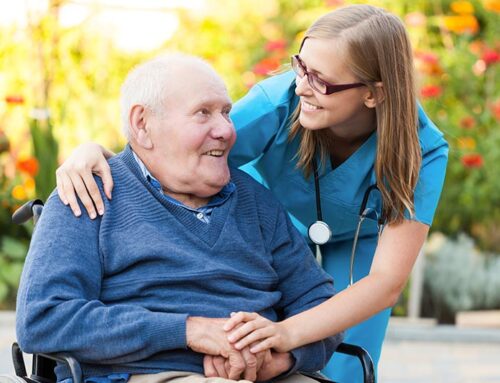Knee swelling is a sign that there’s a problem within the knee. It can be the body’s response to damage to a part of the knee, an overuse injury, or a symptom of an underlying disease or condition. Knee swelling happens when fluid collects in or around the joint of a knee.
Another term for a swollen knee is knee effusion or water on the knee. If knee swelling persists for more than three days, if swelling worsens, or if you experience severe pain alongside the swelling, seek the advice of a medical professional.
In the meantime, here are eight ways to treat knee swelling quickly at home.
1. Rest
The first step is to rest the knee. Avoid sports and other weight-bearing activities for 24 hours or more to give your knee a break and a chance to heal.
However, it’s still good to gently straighten the knee and flex it multiple times a day. This will help the knee maintain a range of motion.
2. Ice
Apply ice to the knee for 15 to 20 minutes every two to four hours for the first two to three days after a knee injury. This will help control the pain and reduce the swelling. Remember to use a towel between the ice pack and your skin to avoid damaging your skin.
3. Compress
Wrap an elastic bandage or sleeve around your knee snugly to prevent fluid from getting worse. Be careful not to wrap it too tightly, which may cause swelling in the lower leg and foot.
4. Elevate
Sit or lie down with your leg lifted while you ice your knee. Put your leg up on an elevated stool or pillows to decrease blood flow to the affected knee. This helps to reduce inflammation.
Make sure your leg is elevated higher than heart level. This is the final step in the popular RICE method, which stands for rest, ice, compression, and elevation.
What is the best anti inflammatory for knee pain?
Over-The-Counter Medication for Knee Pain The main over-the-counter drugs are acetaminophen (Tylenol and other brands) and non-steroidal anti-inflammatory drugs (or NSAIDs), including aspirin (such as Bayer), ibuprofen (Advil, Motrin), and naproxen (Aleve). These can help with simple sprains or even arthritis.
5. Take anti-inflammatory medications
Over-the-counter medications can help with knee pain. Pain relievers such as acetaminophen (Tylenol) and ibuprofen (Advil, Motrin) are readily available options at grocery and convenience stores, as well as online.
While acetaminophen is just a pain reliever, ibuprofen, aspirin, and naproxen (Aleve) are also anti-inflammatory. These medications belong to a class known as nonsteroidal anti-inflammatory drugs (NSAIDs). It’s good to use an anti-inflammatory pain reliever to help relieve knee swelling.
In cases where a medical intervention is necessary, a doctor may give you a prescription pain reliever or an oral corticosteroid, like prednisone. There are also steroids that can be injected directly into the knee joint. These will help reduce inflammation.
6. Switch to heat
After 72 hours of intermittent icing, you can add in some heat. Consider taking a warm bath, or use a heating pad or a warm towel for 15 to 20 minutes, a few times a day. If the swelling becomes worse, stop the heat.
7. Try massage
Massaging the knee may help fluid drain from the joint. You can give yourself a gentle self-massage or get a massage from a professional.
For a self-massage, you can choose to apply lubrication to your knee with castor oil. Not only will the oil help your hands to easily glide over your knee, but also the topical application of castor oil is known to reduce pain and inflammation.
8. Do knee exercises
Once the injury has healed a bit, you can do isometric exercises to strengthen the muscles that support your knee. When the muscles around a joint are strong, they can help relieve joint pressure. These exercises can also help reduce fluid in the knee.
It’s often a good idea to keep your knees strong as a preventive measure against knee damage and swelling. Certain exercises can be helpful for maintaining strong knees, including:
- flexibility training
- weight training
- low impact exercises such as water aerobics and swimming
Maintaining a healthy weight can also help prevent unnecessary wear-and-tear damage that can result in a swollen knee.
Causes
While a common reason for knee swelling is inflammation from overuse, major injuries can also cause the fluid buildup. These can include:
- torn ACL
- torn meniscus
- broken bones
A disease or condition can also be the root cause of a swollen knee. Underlying causes can include:
- osteoarthritis
- rheumatoid arthritis
- an infection
- gout or pseudogout
- tumors
- bursitis
- cysts
When to see a doctor
While most knee pain can be treated at home, knee swelling could also be a sign of a major injury, or the symptom of an underlying medical condition.
It’s important to contact a doctor if:
- you have severe swelling or pain
- you can’t fully straighten or flex the knee
- your condition isn’t improved by the RICE method within three days
- you have a fever of 100.4°F or higher
- the knee turns red and feels warm to the touch
- the knee cannot bear weight and feels like it will “give out” (this can be a sign of a torn ligament)
- you have a sharp pain when you rise from a squat position (this can be a sign of a torn meniscus)
Rheumatoid arthritis and gout can also cause swelling. If you have symptoms like fever or redness, it’s important to seek medical care.
Some significant knee damage may require surgery. Reconstruction procedures can range from minimally invasive arthroscopic repairs to knee replacements.



